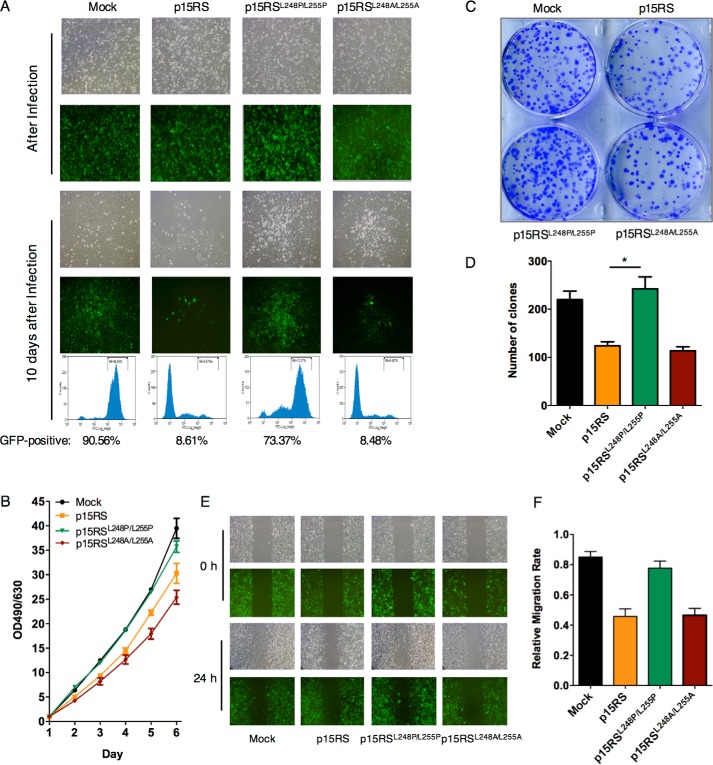Figure 4.
p15RS dimerization participates in the inhibition of cell proliferation. A, p15RSL248P/L255P failed to inhibit cell proliferation. A375 cells were infected with pLVX/GFP-tagged p15RS, p15RSL248P/L255P, or p15RSL248A/L255A lentivirus packaged by pLVX plasmid system. The same efficiency of infection was set for overexpression of p15RS and its mutants. Brightfield and fluorescence were shown. After a 10-day culture, GFP-positive cells were counted by FACS. B, dimerization of p15RS is important for cell growth inhibition. 1 × 103 A375 cells stably overexpressing GFP-tagged p15RS, p15RSL248P/L255P, or p15RSL248A/L255A by pLVX lentivirus were seeded in triplicate on 96-well plates and cultured for the indicated time periods. Cell densities were measured at OD490 nm/OD630 nm. C and D, disabled dimerization loses the ability to inhibit cell clone formation. A375 stable cell lines were seeded on 6-well plates at a density of 1 × 103 cells/well and maintained for 2 weeks for the colony formation. Cells were fixed with methanol and stained with 0.1% crystal violet (C). Colony numbers were counted from three independent experiments (D). Data are presented as mean ± S.D. *, p < 0.05. E and F, the effect of dimerization on cell migration. Monolayer A375 cells stably overexpressing GFP-tagged p15RS, p15RSL248P/L255P, or p15RSL248A/L255A were scratched with sterile pipette tips. Cell migration was observed and photographed by microscopy 24 h later (E). The migration rates were measured by the software ImageJ (F). Data are presented as mean ± S.D. **, p < 0.01.

